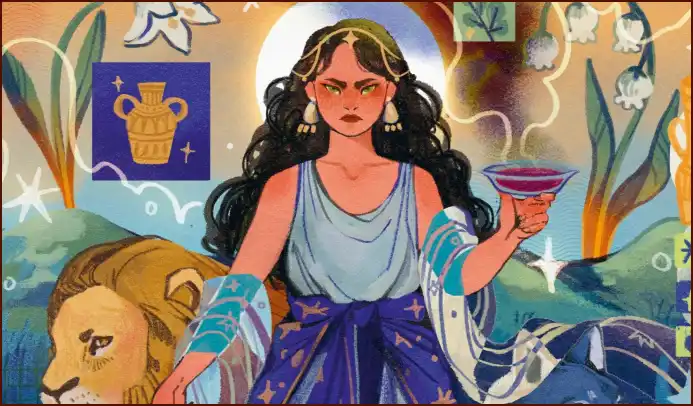In the ancient world, long before the hysteria of the European witch trials, the figure of the witch was a complex and often accepted part of society. Magic was not seen as inherently evil, and its practitioners held diverse roles, from revered priestesses to feared sorcerers.
Table of Contents
From the powerful goddesses of Mesopotamia to the enigmatic sorceresses of Greek and Roman mythology, witches in antiquity were figures of immense power, knowledge, and ambiguity. They could heal as easily as they could curse, and their wisdom was sought by commoners and kings alike. This era viewed magic as a potent force, and those who could wield it were treated with a mixture of awe, respect, and caution.
🏛️ Witches in Greece and Rome
In classical Greece and Rome, witches were powerful figures who often appeared in mythology and literature. Two of the most famous were Circe and Medea. Circe, the sorceress from Homer’s *Odyssey*, was famous for her ability to transform men into animals with her potions and spells. Medea, a priestess of the goddess Hecate, was a master of dark magic who used her powers to help and later take revenge on the hero Jason.
These figures were not simply evil; they were depicted as complex women who wielded magic as a source of personal power in a patriarchal world. Their stories reflect the ancient world’s fascination with and fear of female power that operated outside of conventional boundaries.
🔮 Goddesses of Magic
The practice of witchcraft in the ancient world was often associated with powerful deities who governed magic, the night, and the underworld. The most significant of these was the Greek goddess Hecate, often depicted as a triple-goddess who held dominion over crossroads, ghosts, and sorcery. She was the patron goddess of witches, and many rituals and spells were performed in her name.
Other important goddesses associated with magic include:
- Isis: The Egyptian goddess of magic and wisdom, whose cult spread throughout the Roman Empire. She was known as ‘Great of Magic’ and was a master of healing and protective spells.
- Diana: The Roman goddess of the hunt and the moon, who was later syncretized with other goddesses and became a central figure in some medieval witchcraft traditions.
📜 Curses and Protective Magic
Magic in the ancient world was a practical art. People would visit practitioners for a variety of reasons, from healing illnesses to gaining an advantage over a rival. One of the most common forms of magic was the creation of curse tablets (*defixiones*). These were thin sheets of lead inscribed with a curse, which were then folded, pierced with a nail, and often buried in a grave or a well to place them in the realm of the underworld spirits.
Conversely, protective magic was equally important. People wore amulets to ward off the evil eye, curses, and disease. The line between religion, magic, and medicine was often blurred, and the witch in the ancient world was a figure who moved between all of these realms.
—
Atkinson, Hazel. The Extraordinary History of Witches. 2025.
More Topics
- Curses: The History of the Evil Eye and Binding Magic
- Magical Plants: A Witch’s Garden of Herbs and Poisons
- Roman Magic: Curses, the Strix, and Everyday Protection
- Circe: The Greek Sorceress of Transformation and Myth
- Greek Magic: Hecate’s Power, Oracles, and Enchantresses
- Japanese Magic: Yōkai, Onmyōdō, and Supernatural Folklore
- Empress Chen Jiao: The Royal Scandal of Witchcraft in Han China

